Gustave Courbet (French, 1819-1877) La plage de Saint-Aubin signed and indistinctly dated '.68/Gustave Courbet' (lower left) oil on canvas 59.7 x 73.7cm (23 1/2 x 29in). Fußnoten Provenance Fourquet Collection, Paris, 1882. Charles A. Platt Collection. Wildenstein & Co., New York. Norman and Cynthia Armour Collection, New York. Sale, Christie's, New York, 19 April 2005, lot 160. Private collection, UK (acquired from the above sale). Exhibited Paris, Ecole Nationale des Beaux Arts, Exposition des oeuvres de Gustave Courbet May 1882, no. 120. Paris, Galerie Bernheim Jeune, Gustave Courbet December 1917-January 1918, no. 24. Paris, Galerie Bernheim Jeune, Courbet, 18-31 July 1919, no. 18. Hamburg, Kunsthalle and Frankfurt, Städtische Galerie im Städelsche Kunstinstitut, Courbet und Deutschland, October 1978-March 1979, no. 474/9, p. 548 (illustrated). Literature E. Chéron, Album photographique de l'exposition Courbet, Ecole Nationale des Beaux Arts, Paris, 1882, sheet 9. R. Fernier, La vie et l'oeuvre de Gustave Courbet catalogue raisonné, Lausanne and Paris, 1978, vol. II, p. 40, no. 603, illustrated p. 41 (listed as dated 1867). Born in Ornans in eastern France, Gustave Courbet was introduced to painting at the age of 14; after moving to Paris, he started frequenting the studio of Charles de Steuben and the Académie Suisse, although he preferred to educate himself by copying works by Spanish, Venetian, Dutch and Romantic painters in the Louvre. Portraits of family members progressed to self-portraits, which proved to be a favourite subject, Courbet producing works such as Man in despair (1841), Courbet with a black dog (1842), The wounded man (1844-1854) and The man with the leather belt (Portrait of the artist) (1845-1846). By 1848, Courbet had ten paintings accepted to the Salon and the State purchased After Dinner at Ornans (1849), now in the Musée des Beaux-Arts, Lille. Amongst critics and collectors Courbet's work was soon gaining traction, and to an increasingly growing audience he started to radically challenge the established artistic tradition. He found new ways of expression in his landscapes, nude studies and, notably, he produced paintings of domesticity and every day life, on a monumental scale usually reserved for historical or religious subjects. Courbet also challenged the traditions of maritime painting. Among many of his contemporaries, marine painting focused on depictions of the shipping trade, naval activity, military battles and the victory of man over the powerful forces of the sea. J.M.W. Turner was one of the pre-eminent marine painters and his expansive seascapes explored the power of nature through swirling colour and impressive compositions. Courbet challenged this tradition of narrative marine painting - where the ship and humans provided the story, or a dramatic storm dominated the tale- producing a number of canvases with cloud-filled skies, seascapes full of lyrical beauty with no threat of stormy weather and minimal human activity, often just a hint of sail in the distance. Courbet's earliest seascapes date to 1841. He first visited the Normandy coast, and this sparked a long-lasting interest in depicting the sea as an alternative to the countryside of his native Franche-Comté. He completed a series in 1854 when he went to Montpelier and then further trips to Normandy from 1859-1869 influenced his exhibition strategy for the Salon. He was also inspired by Trouville and Deauville and later more dramatic wave paintings were informed by the terrain around Étretat. At the end of August 1867, Courbet was invited by his friend and patron, the pharmacist Fourquet, who owned a property in Saint-Aubin-sur-Mer, remaining there for ten days. The present lot is one of the three seascapes Courbet produced during this stay, although he finished and signed the work in his studio in Paris. An immense sky dominates the sea at low tide. A suggestion of a cresting wave in the foreground, through application of w
Gustave Courbet (French, 1819-1877) La plage de Saint-Aubin signed and indistinctly dated '.68/Gustave Courbet' (lower left) oil on canvas 59.7 x 73.7cm (23 1/2 x 29in). Fußnoten Provenance Fourquet Collection, Paris, 1882. Charles A. Platt Collection. Wildenstein & Co., New York. Norman and Cynthia Armour Collection, New York. Sale, Christie's, New York, 19 April 2005, lot 160. Private collection, UK (acquired from the above sale). Exhibited Paris, Ecole Nationale des Beaux Arts, Exposition des oeuvres de Gustave Courbet May 1882, no. 120. Paris, Galerie Bernheim Jeune, Gustave Courbet December 1917-January 1918, no. 24. Paris, Galerie Bernheim Jeune, Courbet, 18-31 July 1919, no. 18. Hamburg, Kunsthalle and Frankfurt, Städtische Galerie im Städelsche Kunstinstitut, Courbet und Deutschland, October 1978-March 1979, no. 474/9, p. 548 (illustrated). Literature E. Chéron, Album photographique de l'exposition Courbet, Ecole Nationale des Beaux Arts, Paris, 1882, sheet 9. R. Fernier, La vie et l'oeuvre de Gustave Courbet catalogue raisonné, Lausanne and Paris, 1978, vol. II, p. 40, no. 603, illustrated p. 41 (listed as dated 1867). Born in Ornans in eastern France, Gustave Courbet was introduced to painting at the age of 14; after moving to Paris, he started frequenting the studio of Charles de Steuben and the Académie Suisse, although he preferred to educate himself by copying works by Spanish, Venetian, Dutch and Romantic painters in the Louvre. Portraits of family members progressed to self-portraits, which proved to be a favourite subject, Courbet producing works such as Man in despair (1841), Courbet with a black dog (1842), The wounded man (1844-1854) and The man with the leather belt (Portrait of the artist) (1845-1846). By 1848, Courbet had ten paintings accepted to the Salon and the State purchased After Dinner at Ornans (1849), now in the Musée des Beaux-Arts, Lille. Amongst critics and collectors Courbet's work was soon gaining traction, and to an increasingly growing audience he started to radically challenge the established artistic tradition. He found new ways of expression in his landscapes, nude studies and, notably, he produced paintings of domesticity and every day life, on a monumental scale usually reserved for historical or religious subjects. Courbet also challenged the traditions of maritime painting. Among many of his contemporaries, marine painting focused on depictions of the shipping trade, naval activity, military battles and the victory of man over the powerful forces of the sea. J.M.W. Turner was one of the pre-eminent marine painters and his expansive seascapes explored the power of nature through swirling colour and impressive compositions. Courbet challenged this tradition of narrative marine painting - where the ship and humans provided the story, or a dramatic storm dominated the tale- producing a number of canvases with cloud-filled skies, seascapes full of lyrical beauty with no threat of stormy weather and minimal human activity, often just a hint of sail in the distance. Courbet's earliest seascapes date to 1841. He first visited the Normandy coast, and this sparked a long-lasting interest in depicting the sea as an alternative to the countryside of his native Franche-Comté. He completed a series in 1854 when he went to Montpelier and then further trips to Normandy from 1859-1869 influenced his exhibition strategy for the Salon. He was also inspired by Trouville and Deauville and later more dramatic wave paintings were informed by the terrain around Étretat. At the end of August 1867, Courbet was invited by his friend and patron, the pharmacist Fourquet, who owned a property in Saint-Aubin-sur-Mer, remaining there for ten days. The present lot is one of the three seascapes Courbet produced during this stay, although he finished and signed the work in his studio in Paris. An immense sky dominates the sea at low tide. A suggestion of a cresting wave in the foreground, through application of w
.jpg)

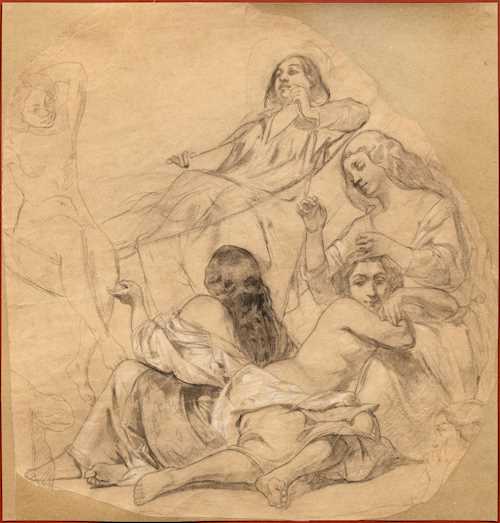
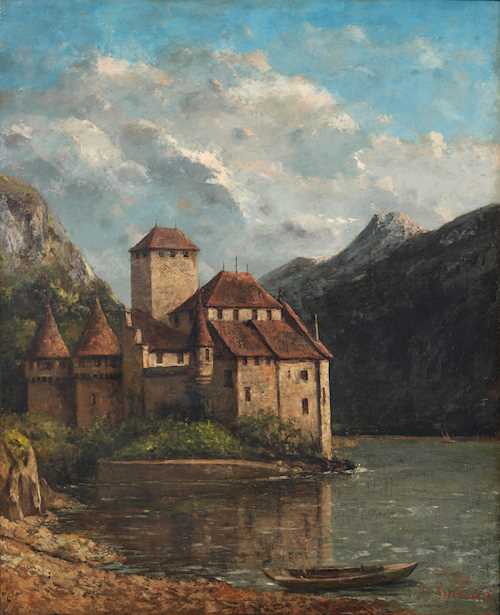
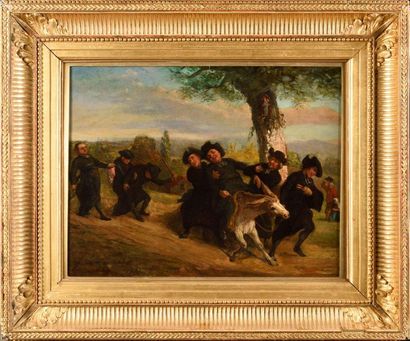
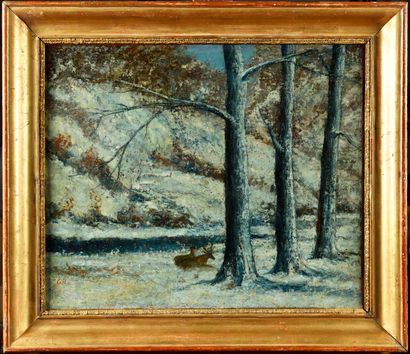



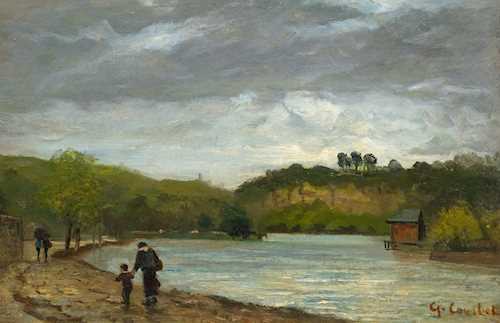

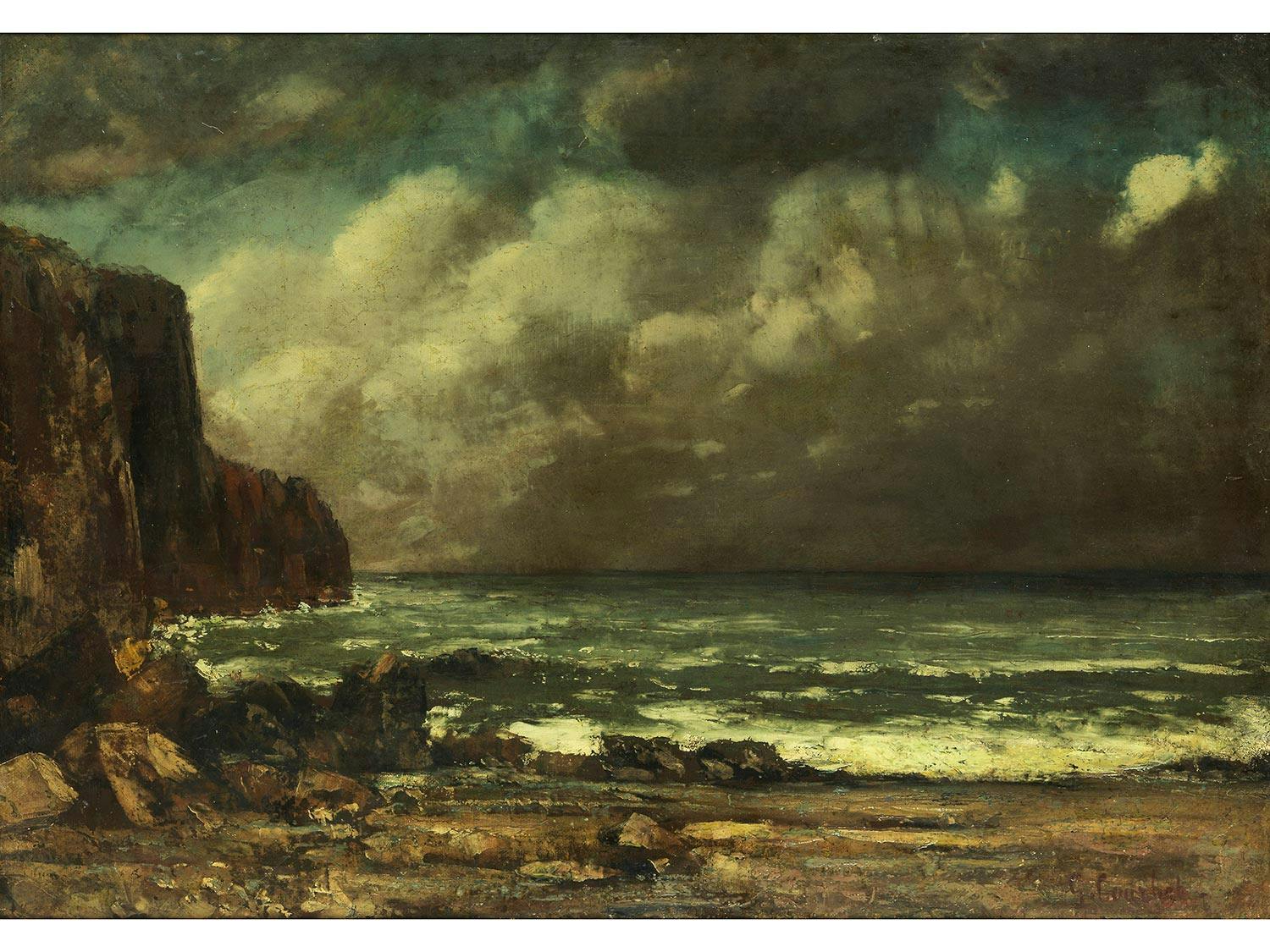

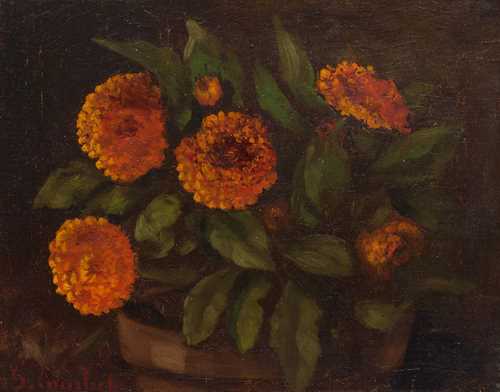

Try LotSearch and its premium features for 7 days - without any costs!
Be notified automatically about new items in upcoming auctions.
Create an alert